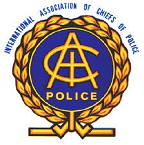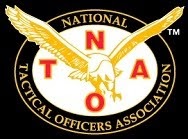video url: https://www.youtube.com/watch?v=_Tffm0ooRCs
A
car chase is the vehicular hot pursuit of suspects by law enforcers. Car chases
are often captured on film and broadcast due to the availability of video
footage recorded by police cars and police and media helicopters participating
in the chase. In some countries they are a popular subject with media and
audiences due to their intensity and drama and the innate danger of high-speed
driving.
In
reality
Car
chases occur when a suspect attempts to use a vehicle to escape from law
enforcement attempting to detain or arrest him or her. The assumed offence
committed may range from misdemeanours such as traffic infractions to felonies
as serious as murder. When the suspect realizes that they have been spotted by
law enforcement, they attempt to lose their pursuers by driving away, sometimes
at high speed. In 2002, 700 pursuits were reported in the city of Los Angeles. Los
Angeles television station KCAL reported a quadrupling of ratings when police
pursuits aired. Police officials have asked news media to reduce coverage of
chases, claiming that they encourage suspects to flee and inciting gawkers to
possibly get in the way of the pursuit, while the media responds that coverage
of chases provides a public service and provide a deterrent to police
brutality.
Police
use a number of techniques to end chases, from pleading with the driver,
waiting for the driver's vehicle to run out of gas, or hoping the driver's
vehicle becomes somehow disabled to more forceful methods such as boxing in the
vehicle with police cruisers, ramming the vehicle, the PIT maneuver, shooting
out the tires, or the use of spike strips, though all efforts, many of which
pose risk to all involved as well as bystanders, will be aimed at avoiding
danger to civilians. When available, a helicopter may be employed, which in
some cases, may follow the vehicle from above while ground units may or may not
be involved. The StarChase system as of summer 2009 was in use by the Arizona
Department of Public Safety.
The
February 2005 Macquarie Fields riots occurred in Sydney, Australia after a
local driver crashed a stolen vehicle into a tree, killing his two passengers
following a high-speed police pursuit. The death of university student Clea
Rose following a police chase in Canberra sparked major recriminations over
police pursuit policies. Ole Christian Bach was found shot and killed in Sweden
in a presumed suicide after he had been followed in a car chase by Swedish
undercover police.
Reality
television has combined with the car chase genre in a number of television
shows and specials featuring real footage, mostly taken from police cruisers
and law enforcement or media helicopters of suspects fleeing police.
One
notable, recorded police chase occurred when an M60 Patton tank was stolen by
Shawn Nelson from an Army National Guard armory, on May 17, 1995. Nelson went
on a rampage through San Diego, California, with the massive tank crushing multiple
civilian vehicles before wrecking its tread on the concrete median barrier of
the freeway divider. Police were able to get aboard the tank and open the
hatch, killing the suspect when he would not surrender.
On
June 4, 2004, welder Marvin Heemeyer went on a rampage in a heavily modified
bulldozer in Granby, Colorado, wrecking 13 buildings including the town hall,
the public library, a bank, a concrete batch plant, and a house owned by the
town's former mayor, resulting in over $7 million in damage. The police were
initially powerless, as none of their weapons could penetrate the suspect's
vehicle. However, the bulldozer's engine failed and the machine became stuck,
so Heemeyer committed suicide by gunshot.
On
July 27, 2007, at exactly 12:46:20 p.m. MST in Phoenix, Arizona, two
helicopters crashed in mid air. Both are AS-350 AStar helicopters from KNXV-TV
(the area's ABC affiliate) and KTVK (an independent, but was the ABC affiliate
until losing it to KNXV in 1995) news stations collided in mid-air above Steele
Indian School Park in Phoenix, Arizona while covering a police pursuit. Four
people were killed: KTVK pilot Scott Bowerbank and photographer Jim Cox; and
pilot Craig Smith and photographer Rick Krolak of KNXV. No one on the ground was injured.
On
September 28, 2012, Fox News aired a live police chase in Arizona which ended
in the suspect shooting himself in the head. Fox News was airing it in a
five-second delay instead of a normal ten-second delay, which resulted in the
shooting being aired on a live broadcast of the Fox Report. Shepard Smith soon
apologized for the broadcast and vowed to never let it happen again.
Risks
and legal considerations
High-speed
car chases are recognized as a road safety problem, as vehicles not involved in
the pursuit or pedestrians or street furniture may be hit by the elusive
driver, who will often violate a number of traffic laws, often repeatedly, in
their attempt to escape, or by the pursuing police cars. In the UK, it is
estimated that 40 people a year are killed in road traffic incidents involving
police, most as a result of a police pursuit.
Kristie's
Law is a proposed California law that would restrict immunity for damage
(including injuries or deaths) caused by high-speed pursuits, where law
enforcement agencies have established, but not followed, written pursuit
policies.
In
2007, the United States Supreme Court held in Scott v. Harris (550 U.S. 372)
that a "police officer's attempt to terminate a dangerous high-speed car
chase that threatens the lives of innocent bystanders does not violate the
Fourth Amendment, even when it places the fleeing motorist at risk of serious
injury or death."
In
most common law jurisdictions, the fireman's rule prevents police officers
injured in such pursuits from filing civil lawsuits for monetary damages
against the fleeing suspects, because such injuries are supposed to be an
inherent risk of the job. Public outrage at such immunity has resulted in
statutory exceptions. One example is California Civil Code Section 1714.9
(enacted 1982), which reinstates liability where the suspect knew or should
have known that the police were present.
Inter-jurisdictional
pursuits and policy issues
One
particular hazard that is attendant to police pursuits is the problem of
multiple law enforcement agencies becoming involved in a car chase that crosses
municipal and jurisdictional boundaries. This is often complicated by radio
communication incompatibility and policy differences in the various departments
involved in a pursuit.
The
city of Dallas, Texas was the first major city in the United States to adopt an
"Inter-Jurisdictional Pursuit Policy" to address the problems
inherent in car chases that involved more that one law enforcement agency. In
August 1984, the Dallas Police Department's Planning and Research Division,
under the command of Captain Rick Stone, began crafting a policy that more than
twenty (20) local law enforcement agencies could agree to abide by when car
chases crossed their borders. The result was a model policy that became the
standard for use by police departments around the country.
In
Europe, as many national borders no longer have border stations, car chases may
sometimes cross national boundaries. States often have agreements in place
where the police of one state can continue the chase across the national
boundary.
url: https://en.wikipedia.org/wiki/Car_chase















Nenhum comentário:
Postar um comentário
Deixe aqui sua opinião, crítica ou sugestão.